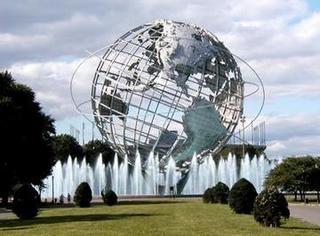Pax Verstehens





While the 1939/40 Fair was structured around a single idea, "Building a World of Tomorrow," Moses was motivated by his desire that the new Fair contain endless variety, "to be universal, to have something for everyone." Moses accepted the Fair's theme "Peace Through Understanding" that was originally proposed by Jerome Weinstein during Robert Koppel's tenure as Fair president, but he was quick to add others. Moses declared "The basic purpose of the Fair is Peace through Understanding, that is education of the peoples of the world as to the interdependence of nations to ensure a lasting peace. The Fair is dedicated to Man's achievements on a shrinking globe in an expanding universe, his inventions, discoveries, arts, skills and aspirations...." The other Fair theme was "A Millennium of Progress."
The Unisphere is the theme symbol of the Fair. Its top is 140 feet above ground level and the globe is 120 feet in diameter with an open grid of latitudes and longitudes supporting the land masses. The reflecting pool beneath is 310 feet in diameter. It dramatizes the interrelation of the peoples of the world and their yearning for "Peace through Understanding."
We're still yearning.